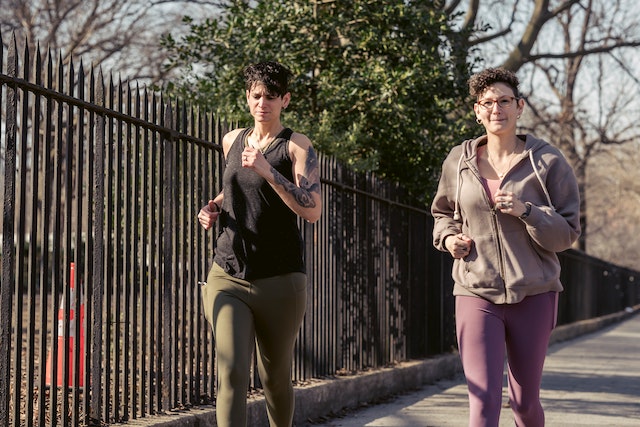
Contents
Runner’s high is a big part of training so let’s learn of the blood-brain barrier, central nervous system and more to get it
It’s weird, isn’t it? How our bodies can feel so good through a sometimes concerning amount of physical stress. Thankfully, our bodies can take a hell of a lot when it comes to strain and stress. And in fact, as a testament to the almost magic-like properties of our very own bodies, they get stronger the more stress you put them under.
So what about feeling happy?
Sure, we get stronger, but why is it we get a crazy buzz from our post-match runs or lifts?
Aerobic exercise is full of reasons as to why our brains enjoy running. Runner’s high is brilliant to cultivate, not only because it feels good, but of course, it feeds into how much we want to run again.
So, let’s look at a few ways to break down runner’s high, how to get it, why it works and perhaps why you’re failing to feel it.
What is a runner’s high?
Feelings of runners high can vary, but overall it feels brilliant. It’s that unrelenting sensation of progress, success and accomplishment. But when we look closer, it’s actually a little more than that…
Runner’s high is a quickfire release of chemicals called endorphins. Marathonhandbook states, ”Endorphins are your body’s own home-made opiates, which actually act in a similar way to morphine (the engineered version of an opiate).”
Our brain, yes, the same system responsible for all the good stuff, allows us to achieve runner’s high. Historically, scientists believed endorphins, or pain-relieving chemicals in your body that are released during exercise, prompted a runner’s high. But recent research from Germany has posited another factor: endocannabinoids. “Endocannabinoids seem to maintain homeostasis in our body, making sure everything runs effectively,” (says Harrast)
So, now we know even a little bit about what it feels like and what it really is, let’s have a look at how to manipulate it.
Choosing a path
Naturally, any task that’s challenging both physically and mentally is going to be difficult. Whether you choose to progress for your mental benefits (mental health), because you want to look better (look good – feel good) or both and more there’s a choice for everyone.
Let’s break a couple down here, but at the end of the day whatever makes you happy, makes you happy.
- Push Your Body
- As I mentioned, pushing yourself through anything is a sure fire way to succeed in getting runner’s high (or any high) so if your runner’s high occurs because you’ve added some miles on then great, keep at it.
- Run consistently
- The feeling of acclimatising, getting stronger and conquering challenges is exactly what gets runner’s high going. And in order to do that you need to keep running.
- Changing routes
- Changing routes can make things feel new. To get that runner’s high feel you need to mix up your routes and training to add new hurdles to your routines.


Conclusion
Some things may change, and they should – mileage, routes, training methods – but others will stay the same. You will get runner’s high if you consistently push yourself. Voluntary exercise is the way forward so do it yourself and get those feel-good brain chemicals.
FAQs
Will runner’s high help with chronic stress?
Absolutely. Running helps to reduce cortisol and promotes relaxing chemicals like endorphins.
Do experienced runners require a certified personal trainer to progress?
Personal trainers are not an essential necessity, but at the end of the day, professional runner’s use them so they 100% do help. It all depends on the individual though, what motivation they need and what standard of running they are looking to achieve. At the end of the day they may be the missing piece of the puzzle to help you forget about those tired legs.